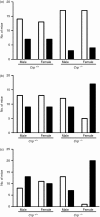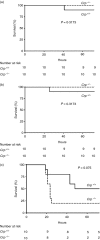C-reactive protein is essential for innate resistance to pneumococcal infection
- PMID: 24673624
- PMCID: PMC4080957
- DOI: 10.1111/imm.12266
C-reactive protein is essential for innate resistance to pneumococcal infection
Abstract
No deficiency of human C-reactive protein (CRP), or even structural polymorphism of the protein, has yet been reported so its physiological role is not known. Here we show for the first time that CRP-deficient mice are remarkably susceptible to Streptococcus pneumoniae infection and are protected by reconstitution with isolated pure human CRP, or by anti-pneumococcal antibodies. Autologous mouse CRP is evidently essential for innate resistance to pneumococcal infection before antibodies are produced. Our findings are consistent with the significant association between clinical pneumococcal infection and non-coding human CRP gene polymorphisms which affect CRP expression. Deficiency or loss of function variation in CRP may therefore be lethal at the first early-life encounter with this ubiquitous virulent pathogen, explaining the invariant presence and structure of CRP in human adults.
Keywords: C-reactive protein; anti-nuclear antibodies; host resistance; mouse knockout; pneumococcal infection.
© 2014 The Authors. Immunology published by John Wiley & Sons Ltd.
Figures





References
-
- Volanakis JE, Kaplan MH. Specificity of C-reactive protein for choline phosphate residues of pneumococcal C-polysaccharide. Proc Soc Exp Biol Med. 1971;136:612–4. - PubMed
-
- Yother J, Volanakis JE, Briles DE. Human C-reactive protein is protective against fatal Streptococcus pneumoniae infection in mice. J Immunol. 1982;128:2374–6. - PubMed
-
- Szalai AJ, Briles DE, Volanakis JE. Human C-reactive protein is protective against fatal Streptococcus pneumoniae infection in transgenic mice. J Immunol. 1995;155:2557–63. - PubMed
-
- Pepys MB, Baltz ML. Acute phase proteins with special reference to C-reactive protein and related proteins (pentaxins) and serum amyloid A protein. Adv Immunol. 1983;34:141–212. - PubMed
Publication types
MeSH terms
Substances
Grants and funding
LinkOut - more resources
Full Text Sources
Other Literature Sources
Medical
Molecular Biology Databases
Research Materials
Miscellaneous

